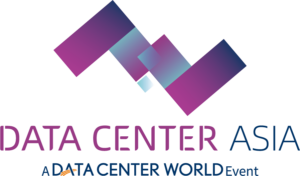Data centers are the backbone of the digital age, powering everything from cloud storage to artificial intelligence (AI) applications. However, their immense energy needs come with a significant environmental cost—particularly in terms of water consumption. As AI and cloud computing continue to surge, understanding the water footprint of these facilities has become increasingly crucial.

Join Data Center Asia Malaysia 2025
Don’t miss Data Center Asia Malaysia 2025, part of Smart Nation Expo, where Malaysia’s data center ecosystem comes alive. Attend expert-led seminars, discover cutting-edge technologies, and network with industry leaders driving cloud, edge computing, and sustainable infrastructure across the region. Secure your spot as a visitor or exhibitor!
Water Usage in Data Centers Overview
Data centers require substantial amounts of water primarily for cooling purposes. Traditional evaporative cooling systems, which are prevalent in many facilities, use water to dissipate the heat generated by servers.
- Medium-Sized Data Centers: A typical medium-sized data center can consume up to 110 million gallons of water per year, equivalent to the annual water usage of approximately 1,000 households.
- Large Data Centers: Some of the largest data centers can use up to 5 million gallons of water per day, totaling about 1.8 billion gallons annually. This is comparable to the water usage of a town with 10,000 to 50,000 residents.
- AI-Specific Facilities: AI-focused data centers are projected to consume 1,068 billion liters of water annually by 2028, marking an 11-fold increase from current levels. This surge is attributed to the high computational demands of AI technologies.
What are the Main Factors that Influence Water Usage in Data Centers?
1. Local Climate and Ambient Temperature
The geographical location and climate of a data center significantly impact its water consumption. Facilities in hotter regions, such as the southwestern United States, require more water for cooling due to higher ambient temperatures. Conversely, data centers in cooler climates can operate more efficiently with reduced water usage.
2. Data Center Size and Server Density
Larger data centers with higher server densities generate more heat, necessitating more intensive cooling solutions. This increased heat load leads to higher water consumption, especially when using traditional evaporative cooling systems.
3. Type of Cooling System Employed
The choice of cooling system plays a pivotal role in water usage:
- Evaporative Cooling: Common in many facilities, this system uses water to absorb heat. While energy-efficient, it consumes substantial amounts of water.
- Air-Based Cooling: Utilizes ambient air to cool equipment, significantly reducing water consumption but may require more energy.
- Liquid Immersion Cooling: Emerging technology where components are submerged in non-conductive liquids, offering efficient cooling with minimal water use.
4. Workload Intensity and AI Demand
The computational demands of workloads, especially those related to artificial intelligence (AI), increase heat generation. AI models require extensive processing power, leading to higher water usage for cooling. A Morgan Stanley report projects that by 2028, AI data centers could consume 1,068 billion liters of water annually, an 11-fold increase from current levels.
5.Water Usage Effectiveness (WUE)
WUE is a metric that compares the total water used by a data center to the energy consumed by its IT equipment. Monitoring WUE helps in assessing and improving water efficiency. A lower WUE indicates better water efficiency relative to energy usage.
What are the Environmental Consequences of Water Usage in Data Centers?
- Exacerbation of Water Scarcity: In regions already facing water stress, such as parts of the American West, data centers’ high water consumption can deplete local water supplies. For instance, a single data center can consume up to 5 million gallons of potable water per day, equivalent to the daily needs of thousands of households.
- Increased Carbon Footprint: The energy-intensive cooling processes in data centers often rely on fossil fuels, contributing to greenhouse gas emissions. This reliance not only exacerbates climate change but also increases the carbon footprint of digital infrastructure.
- Threat to Biodiversity: Excessive water extraction for cooling can lead to the depletion of local water bodies, affecting aquatic ecosystems and biodiversity. In areas like the American West, over-extraction threatens rivers and aquifers, prompting calls for moratoriums on new data center constructions.
How to Reduce Water Usage in Data Centers?
- Implement Closed-Loop Cooling Systems: Closed-loop systems recirculate water within the facility, minimizing evaporation losses and reducing the need for continuous freshwater intake. This approach significantly decreases water consumption in cooling processes.
- Utilize Alternative Cooling Methods: Exploring advanced cooling methods, such as immersion cooling and close-coupled systems, can enhance heat dissipation while minimizing water usage. These technologies offer efficient alternatives to traditional cooling methods.
- Invest in Water Treatment Solutions: Implementing water treatment systems ensures the use of high-quality water, which enhances cooling efficiency and equipment longevity. Additionally, treated water can be recycled within the facility, further reducing overall water usage.
- Monitor and Manage Water Usage: Establishing a comprehensive water management program allows data center operators to track water consumption, identify inefficiencies, and implement corrective measures. Key metrics such as Water Usage Effectiveness (WUE) can guide optimization efforts
